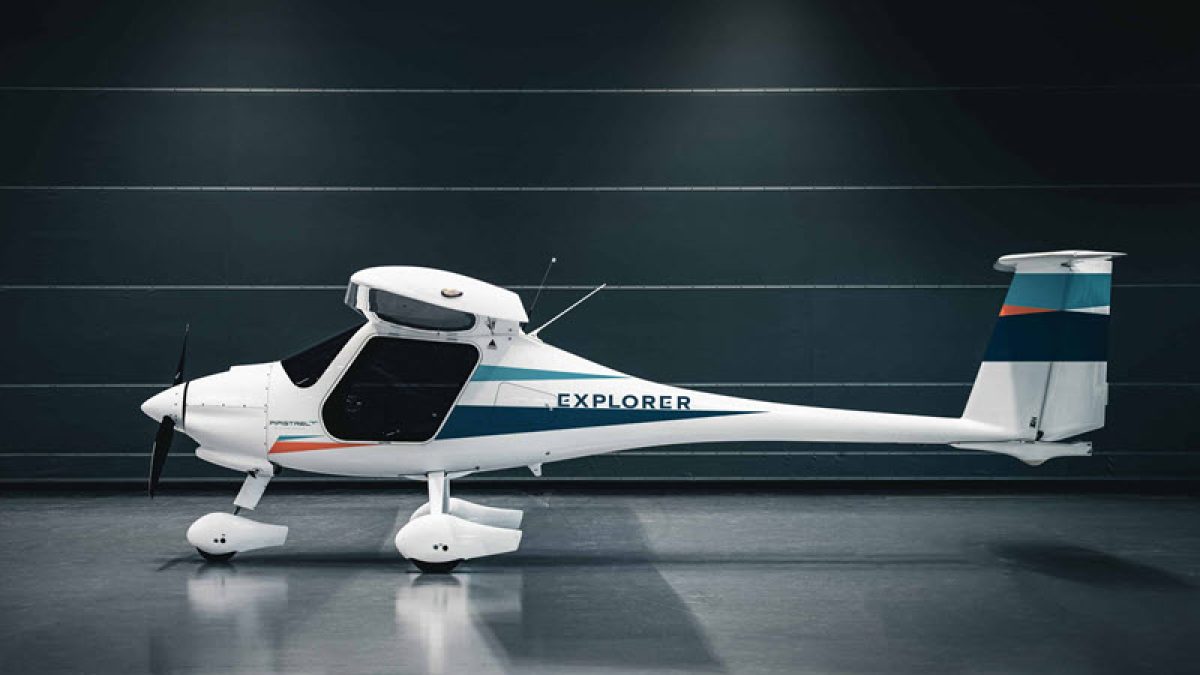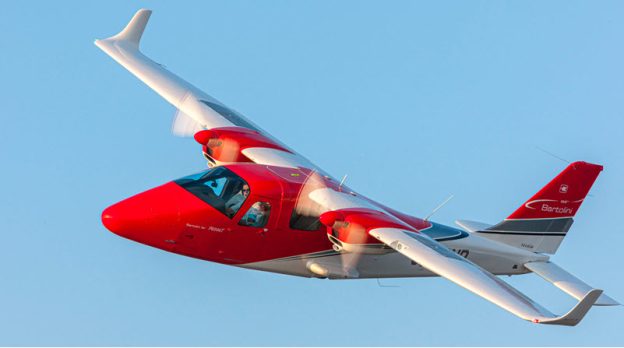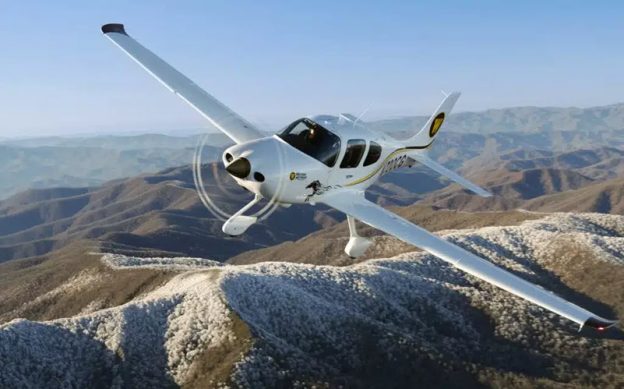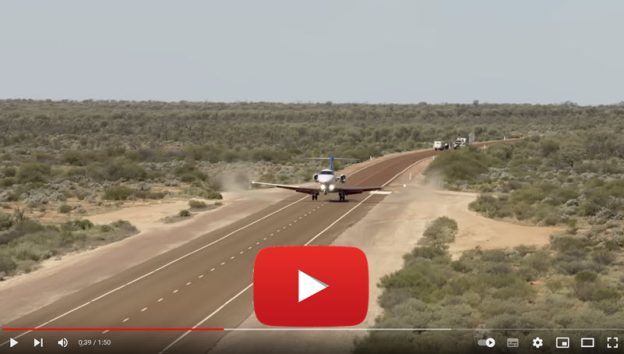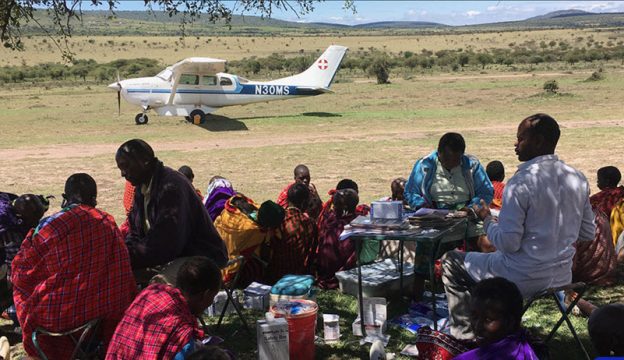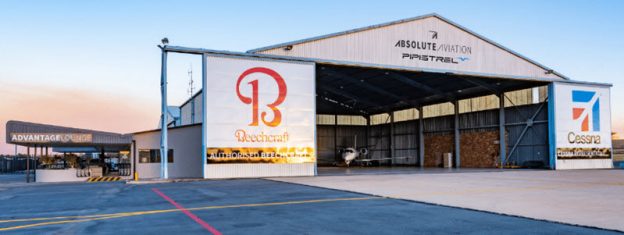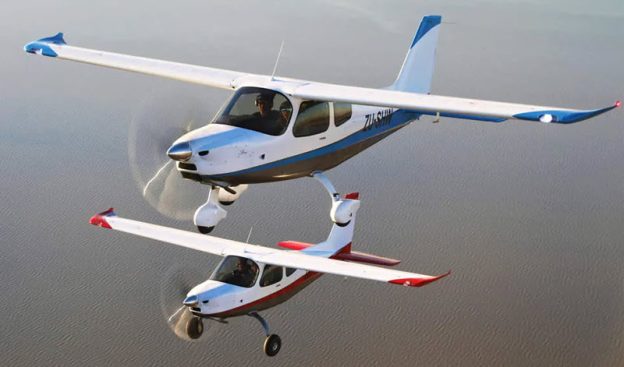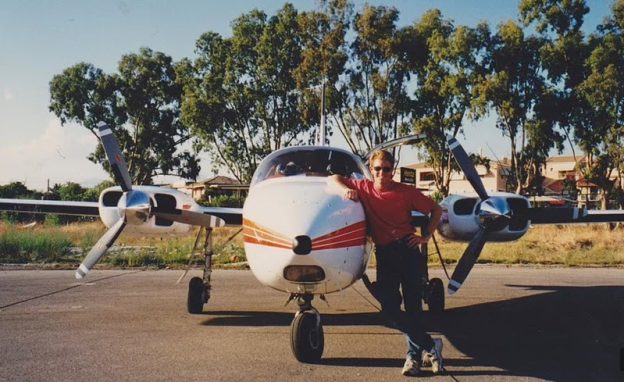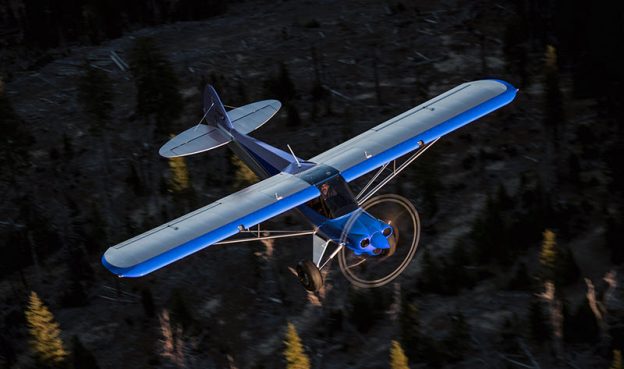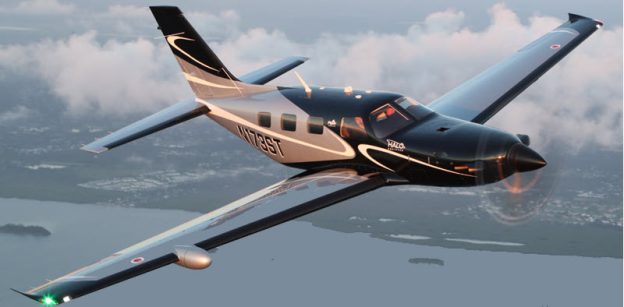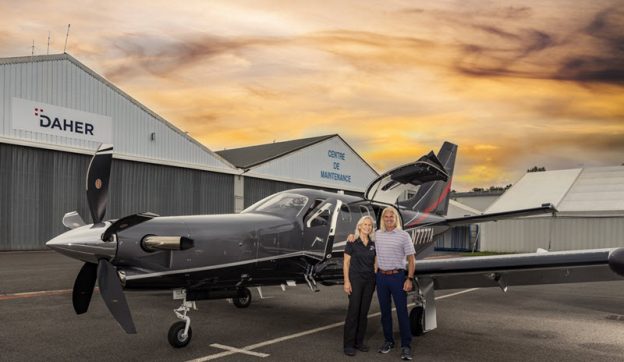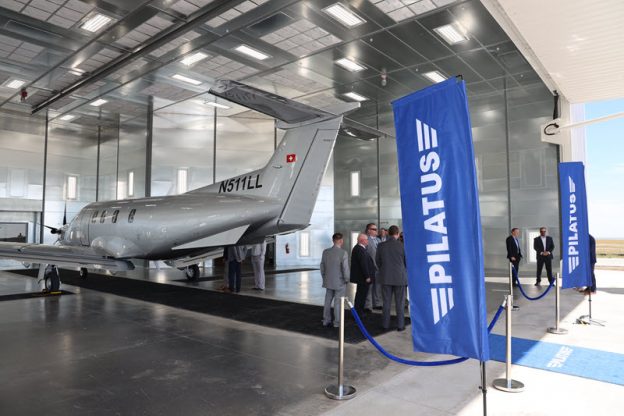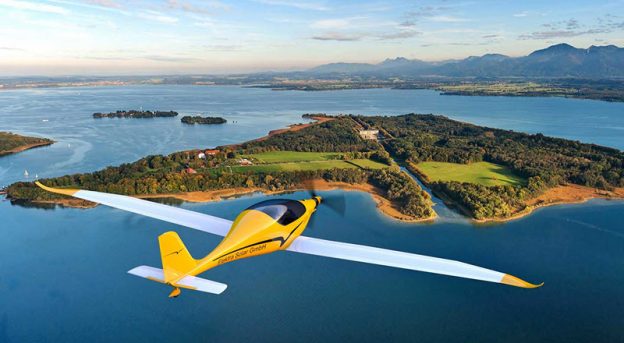In any given year, an average of three pilots die ferrying small aircraft over the North Atlantic. It’s a seriously perilous job that’s 95 per cent terror and five per cent boredom, according to Kerry McCauley, who’s been doing it for an astonishing 32 years. He reveals the sweaty-palm-inducing scariness of the role in a riveting book – Ferry Pilot: Nine Lives Over the North Atlantic – which recounts tales of Kerry flying planes incapable of flying above storms (as jetliners can) across the Atlantic Ocean for hours on end only a compass to follow and delivering them to customers.
His first job was taking a Beechcraft Duchess – ‚[which] had two meek 180 horsepower engines that pushed it along at a blistering 150 knots [172mph] ‚- from St. Paul in Minnesota to Lisbon, Portugal, via St John’s, Newfoundland, and the Azores, the latter reached after crossing 2,530km (1,570 miles) of water. His plane had two extra fuel tanks installed behind the cockpit and an ‚HF (high frequency) radio secured to the top of one of the tanks with bungee cords and duct tape. This was a portable ham radio and was the only way to stay in contact with the controllers in Canada and Europe when dealing with the vast distances of the Atlantic‘. Kerry eventually touched down in Lisbon completely hooked on the thrilling adventure of it all. You might be wondering why there’s any need for such a risky delivery system. Why not take the plane apart and deliver it to its new owner using a cargo ship or plane?
Kerry told MailOnline Travel: ‚The main reason is that planes aren’t meant to be taken apart and put back together. It’s a complicated and expensive process that can go very wrong, very easily.‘ The 59-year-old, who lives in Menomonie, Wisconsin, explained that most of the planes that he has delivered are piston or turbine aircraft – ‚almost all of them have propellers‘. He has only ferried one jet over the years. According to Kerry, these planes have an average speed of 140 (225kph) to 200mph (322 kph), and their altitude ceilings top out at up to 25,000ft (7,620m) – though most tend to reach just 15,000 ft (4,572 m) to 18,000 ft (5,486 m). This cap on altitude is one of many factors that makes ferry flying so treacherous. Kerry said: ‚An airliner or a jet can fly much higher, so it flies over all of the bad weather. They sit up there in the nice smooth air and the sunshine and they tootle right along. Whereas, a propeller-driven aeroplane has to fly in the weather and beat itself against all the icing and the thunderstorms.‘
Kerry, who has flown over the Atlantic over 75 times and over other oceans in the world over 100 times, explained that ferry pilots often don’t have the fuel that’s required to fly around the storm. He revealed: ‚There’s nowhere else to go. You have to go through that thunderstorm, and that can be terrifying. Some of these thunderstorms go up to 40,000ft [12,192m] or 50,000ft [15,240m] and are just massive and powerful. The biggest one I ever went through was in central Africa and there were no airports anywhere that I could reach, except the one I was heading for. And there was a thunderstorm – it was a line of thunderstorms, a 100-mile [161km] line. I just didn’t have the fuel to go around it.‘
Bad weather isn’t the only nerve-jangling hurdle that ferry pilots can face. According to Kerry, the ’number one problem they encounter is the breakdown of the plane’s mechanics. He explained: ‚Jet engines are much simpler and more reliable so they rarely break. Piston engines, on the other hand, have thousands of moving parts in them. And they can wear out. And you can’t really check them very much. Once you seal up a moving engine, the inside is pretty much a mystery until you replace it, or it breaks.‘ If disaster strikes while soaring over the Atlantic, the chances of survival aren’t great, according to Kerry. He revealed: ‚If your plane breaks while you’re over the middle of the ocean, you’re going sailing in your little rubber raft – if you’re lucky enough to have one.‘ What’s happening on the ground can also pose problems for a ferry pilot. He revealed: ‚We deliver planes to all kinds of places in the world and sometimes there are conflicts going on and that can be challenging. Ferry piloting can run into almost any problem, literally, in the world.‘
With these enormous risks to consider, do many aspiring ferry pilots bottle it at the last minute? According to Kerry, it happens all the time. ‚Literally, just a couple of weeks ago I saw that they were looking for a ferry pilot to finish a trip. The pilot had got to Goose Bay, Labrador, and said „nope“ and left the plane on the ramp and went home,‘ he revealed. Kerry said that ‚very few ferry pilots do more than one or two trips across the Atlantic. He explained that the ‚realisation that you’re out over the ocean in a single-engine plane, and at any second that engine could stop and you’re going in‘ can, understandably, lead some pilots to pack it in.
Most pilots do ferry flying ‚as a stepping stone to further their aviation career‘, according to Kerry. He revealed: ‚Almost all pilots, their ultimate goal is to be an airline pilot. So, they’ll do a few ferry flights, realise that’s not a great way to build much time and make any money, and they get out of it quickly. Or they realise it’s too dangerous. ‚There’s very few of us that stick around for any length of time, mostly because it’s just too dangerous or they get killed.‘ Kerry’s book, scored with tales of plane crashes and ferry pilots who went missing over the ocean, is dedicated to his friends in the industry ‚who never made it home. He said: ‚It’s really hard. I’ve lost some very, very close friends over the years and it’s difficult sometimes to deal with that.‘ However, he admitted that it’s ‚part of the lifestyle‘ in the high-risk business of ferry piloting. He said: ‚You know you’re going to lose friends and we all accept that. If you can’t accept it, you stop doing it. And when you lose somebody you just have to take solace in [the fact] they were doing what they love. They were living the lifestyle that they chose and that was actually part of them. We just try to be thankful that we knew them, and we got to fly with them.‘ Kerry has had some extremely close calls himself. He revealed that the closest he was to an ‚imminent crash‘ was when he was ferrying a Piper Aerostar from Arizona to Larnaca, Cyprus. As he was flying over the Alps near Zurich, Switzerland, the plane’s wings, the engine cowling and propeller spinners started picking up ice. He needed to make it over the mountaintops, but the ice was weighing the plane down, making it impossible to climb.
He told us over a Zoom chat: ‚At 19,000ft [5,791m] the plane had literally stopped climbing and [it] was filling up with ice.‘ Eventually, he decided to risk making a descent. Describing the situation, he writes in the book: ‚Out of airspeed, and options, I reluctantly eased the yoke forward and started a slow one hundred foot per minute descent, trading some of our precious altitude for a few knots of equally precious airspeed. It’s a deal with the devil but it’s one I must make.‘ Thankfully, he managed to descend into warmer air and the ice started to melt away. ‚It was close,‘ he admitted.
Another chilling incident was the moment that Kerry lost his fuel in a brand new 1994 Beechcraft F-33 Bonanza on a 12-and-a-half-hour flight from Newfoundland to Paris, with no stops. In the book, he explains that there wasn’t enough pressure to move much-needed fuel between tanks because the air supply tube wasn’t secured properly to the ferry tank. He writes: ‚It was then that I realised just how truly alone I was. My course from St. John’s to Paris took me far south of the normal routes the airlines took when crossing the pond and I knew for a fact that there weren’t any other ferry flights out there. It’s not an exaggeration to say that there probably wasn’t another human being anywhere within five hundred miles of me. At that moment I was literally the loneliest man in the world. I might as well have been halfway to the moon.‘
Thankfully, he managed to pressurise the steel tank by lung power alone, blowing into the air supply hose for hours on end. ‚I had to blow on the ferry tank for eight and a half hours to keep the engine running,‘ he told MailOnline Travel. Against the odds, he landed safely at Paris Airport-Le Bourget. As nerve-wracking as these experiences sound, Kerry refuses to be fazed. He said: ‚I don’t panic or get scared, really, in those situations. I put that aside because it’s not going to help. If you’ve got time to panic, you’ve got time to do something more productive. That’s always been my motto. So, I’ll put the panic aside for later. I can have the shakes when I get down on the ground. When I have a problem in the air, I deal with the problem, and try to find a way out and try to find a solution.‘ With so many years of experience, has he ever been tempted to dip a toe in the world of commercial flying? While Kerry has never sought out a job at an airline, he does some corporate flying on the side – but finds that, after the drama of ferry piloting, it’s ‚too easy.
He said: ‚You’re in a beautiful, well-maintained business jet. You’re up at 45,000ft [13,716m] and all the thunderstorms and everything are below you, and it’s smooth and calm and quiet. It’s got internet, you can be on your Facebook page. It’s like, „this isn’t flying, I could be sitting in a hangar doing this“.‘ The daredevilry of ferry piloting seems to stir a wide range of reactions from commercial pilots. He revealed: ‚You’ll get some airline pilots that think you’re crazy. Some of them look down at you like, „ah you’re just flying that stupid little thing“. But actually, most of them look up to you. They’re like, „I could never do that, I can’t believe you do that, hats off to you, not me, no way in heck.“ ‚They’re astonished when they find out what actually goes on in ferry flying. And a lot of them are, frankly, a little jealous because they don’t… flying an airliner isn’t an adventure, it’s a job. And it’s a great job, I’ve got nothing against airline pilots, a lot of my friends are airline pilots, but they’ll be the first ones to tell you that it’s just a job.‘ He added: ‚It’s not challenging like ferry flying.‘
It’s this appetite for a challenge that has kept Kerry in the industry for so long. ‚It’s just what I’m really good at. I love the adventure, and I love being out by myself, beyond help, essentially, and having to survive by my wits,‘ he said. ‚That’s the kind of thing I was born to do, is to be out there battling the elements and mechanics and all the challenges. I hate boring flying.‘ Kerry names the Egyptian pyramids as one of the most memorable landmarks he’s flown past. ‚Buzzing the pyramids in Egypt was pretty cool. Seeing the pyramids from above and a little below – I was a little below the tops of the pyramids when I buzzed them. That was pretty stunning,‘ he said. One place he’s yet to see from the cockpit is Antarctica – but he’ll be ticking it off his bucket list soon. He plans to fly his personal plane, a Beech Queen Air, to Antarctica via the Caribbean and South America, before returning to Wisconsin via Central America. He said: ‚I have to see Antarctica someday before I die. And I have to be the one flying the plane. It doesn’t count if you’re a passenger – anybody can do that.‘ With a career that’s defined by exhilaration, does the excitement ever fade? He admitted: ‚It does on an easy flight. But ferry flying, the thrill never goes away.‘ Source: ‚Daily Mail‚.
Diesen Beitrag teilen mit:
Gefällt mir:
Gefällt mir Wird geladen …
